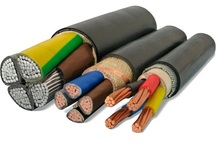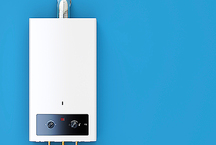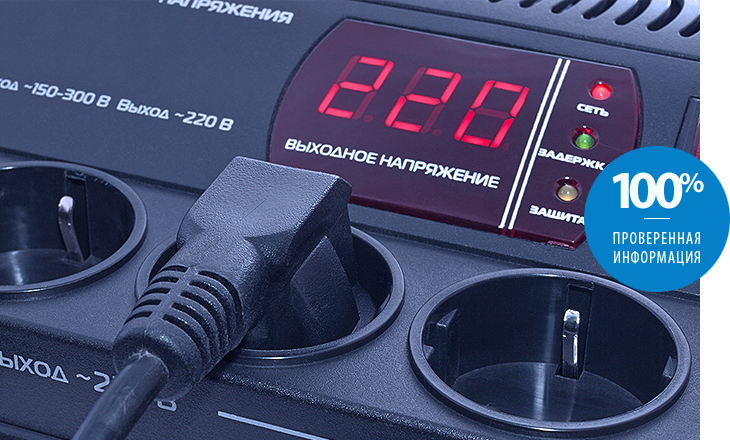
Every year, during the winter and summer, our electrical network begins to work intermittently, even if it is not felt. In winter - during the period of active use of electrical appliances and tools for additional heating. In the summer - during rains and thunderstorms. During such periods, power surges occur regularly. Despite the fact that the voltage in our sockets should be 220 volts, and the frequency - 50 Hz, the real situation does not always correspond to the norm. From a stable voltage directly depends on how long your electrical devices will last you. That is why voltage stabilizers are extremely popular. They are electronic-mechanical devices that convert electrical energy, so that the output it meets all standards. However, it is not enough just to go and buy a stabilizer, you must first decide on the choice of a suitable device. In this article, we will talk about which parameters to pay attention to.
Is your voltage stable?
Determining whether the voltage in the room is stable is very easy. It is enough to notice how often the lamp in your lamp flashes. If blinking is almost impossible to notice, then everything is in order. If it is present, then it's time to think about the stabilizer. You can also check the voltage in the outlet yourself using a multimeter. With an excessively sharp voltage surge of 70-80% of the technology can fail. Despite the fact that many modern devices are built-in fuses, they can not cope with such a load.
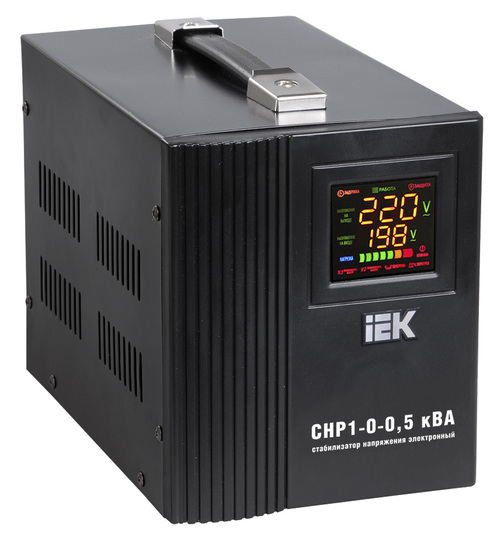
Photo: www.stabilizator-iek.ru
Main selection criteria
Voltage value
First you have to decide on how many devices the voltage regulator will work for. For example, there will be one gas heating boiler or a whole country house. It is important to know what the voltage values of your network, its rating and maximum.
The single phase (220 V) stabilizer is the most popular - it is usually used in city apartments. There are also three-phase (380 V) devices - they are used in production shops and are designed for a large load. But if the stabilizer is planned to be installed in a country house, then the network can be either single phase or three phase. This can be determined in several ways.
- If he lived in the wire, going to the apartment two or three; if there is one blinking LED on the meter; if the automatic switch in the switchboard is single- or double-key, you use a single-phase network.
- If you lived in a wire of at least four; if there are three flashing LEDs on the counter; If the automatic switch in the dashboard is three- or four-keyboard - a two-phase network is available to you.
Types of voltage regulators
There are several types of stabilizers. It depends on the type of production complexity of the device and its final cost.
- Relay stabilizer. To date, the most popular type in the territory of the Russian Federation, despite its low price. It can be attributed to the class of automatic transformer stabilizers. Thanks to the electromechanical power relay, by stepwise regulation of the network, it switches the winding of the autotransformer. an increase or decrease in the voltage at the output in such a device occurs synchronously at the input voltage. One of the main achievements of such a device is the high rate of voltage stabilization (about 20 ms).
- Step voltage regulator almost analogous to relay. In it the transition of the transformer takes place with the help of thyristors and triacs.That's precisely why a device of this type is covered by a large warranty from manufacturers - up to 10 years. This also contributes to the absence of mechanical divisions and, accordingly, wear.
- Electromechanical stabilizer is a booster transformer. Adjustment takes place via a rotating brush contact. The parameters of the brush assembly determine the technical characteristics of the device, such as processing speed, dips and voltage spikes. Single-phase electromechanical stabilizers for a home are, as a rule, a single-brush node, with a capacity of three thousand volt-amperes. Stabilizers of two brushes are not very popular due to the high cost. Periodically, the brushes will have to change, and at the same time to clean the transformer itself, but at home it is not very difficult to do. At a relatively low cost, electromechanical instruments show high stabilization accuracy and smooth voltage regulation. It is acceptable to use in those conditions when the voltage changes periodically and unilaterally. Ideal for connecting to personal computers, home appliances, office equipment. Such stabilizers cannot be connected to welding machines, since their design does not allow reacting to extremely fast jumps in the power grid. Value for money - the best.
- More reliable are considered electrodynamic stabilizers - one of the varieties of electromechanical. Instead of brushes, rollers are embedded in them, due to which their wear is almost eliminated. However, along with the reliability has increased and the price.
- Relatively recently, another type of stabilizer was introduced - hybrid or, as it is called, combined. The difference is that in addition to electrical engineering, a relay part has been added. It starts its work when the voltage in the network drops or rises to abnormal values. For example, if the mains voltage "floats" in the range from 144 to 256 V, then the hybrid stabilizer works similarly to electromechanical. But it is worth the voltage go beyond these values in the range of 105-280 V, as a hybrid device returns it to its normal state with an error of ± 10%.
- Dual conversion stabilizers - quite expensive devices, but they have a number of very attractive features. Such stabilizers should be used in conjunction with highly sensitive devices whose power ranges from 1 to 30 kW. They have a fast connection, almost no noise during operation. They have a wide voltage range and a minimum error. The operation of such a device depends on the existing load on the electrical equipment. The lower voltage range increases from 118 V to 160 V, when the loads on electrical equipment rise by 50% or 70%, respectively.
- The new line in the list of stabilizers are devices with pulse width modulation. The principle of their work is to regulate the voltage of the above modulation. That is, the analog filters at the input and output of the network in the device consistently align all the noise in the network. Very fast, adjustment accuracy - not less than 99%. Such a stabilizer helps with strong surges of electricity, for example, during welding. As a rule, such devices have a small size and minimal mass. This is explained by the fact that there are no heavy and large transformers in them. But the price is not small. Not without drawbacks - the upper threshold at the input of the stabilizer does not exceed 245 V.
- Electromagnetic voltage regulator - This is the one whose voltage regulation at the output occurs due to the regulation of magnetic fluxes. Biasing occurs through a semiconductor controller. This type has many drawbacks - such as hum during operation, a narrow voltage range at the input, high sensitivity when switching to a network frequency of 50 Hz.
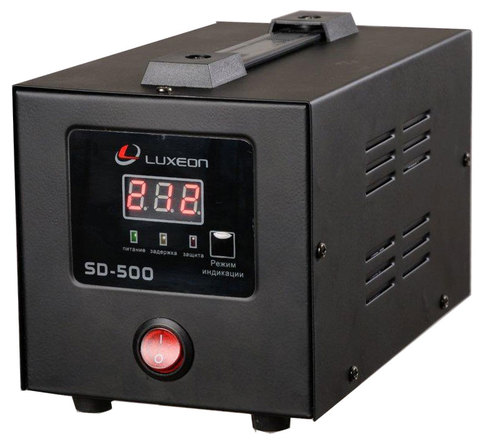
What you need to know
Perhaps the first thing you need to decide on the type of connection stabilizer. You can connect it directly to the network at the electrical panel in order to protect all equipment. Or perhaps a stationary connection home appliances directly to the stabilizer - the device is simply connected to the outlet.
If you have a three-phase network, but all devices are single-phase, then it is necessary to take three single-phase converters. But if there is at least one three-phase device in such a network, then the converter should be only three-phase. This rule is relevant for the stabilization of all electrical appliances in the house, and not individually for one.
Choosing a stabilizer, you must understand what the total power of your devices will be connected to it from this parameter and the power of your device will go out. Add 20-30% to the outgoing value to avoid a freelance overload.
To make it easier for you to determine what the total power of your devices is, you can use our table with approximate values.
|
Household appliances |
Power, W |
|
Incandescent lamps |
40-250 |
|
Fluorescent lamps |
20-400 |
|
Television |
100-400 |
|
Computer |
300-1500 |
|
Iron |
800-3100 |
|
A vacuum cleaner |
350-2500 |
|
Heater |
500-2500 |
|
Fridge |
150-1000 |
|
Microwave |
700-3200 |
|
Electric kettle |
500-3000 |
|
Coffee maker |
300-2300 |
|
Washer |
1500-3000 |
|
Electric stove |
1000-11000 |
To clarify the power you need to refer to the instructions of your equipment.
Most Popular Manufacturers
Today there are more than a dozen Russian and foreign companies successfully producing voltage stabilizers. The products of each of them differ in design, performance, type of food and method of stabilization. Each company has products similar in parameters. But it is only during their use in the business that we learn both about the pros and, unfortunately, about the minuses. Some companies have already lost the trust quota, but the rest, thanks to quality products, are trying to keep the brand.
Here are some manufacturers that are popular in our country with consumers:
Russian brands - Polygon, Norma M, Stab volt, Cascade;
Chinese brands: Solby, Forex, Sassin, Voltron, Goto;
Western brands: Ortea, Orion.
Foreign brands, although better, are inferior in terms of demand to Chinese and Russian products. The reason for the dislike of Russian consumers lies in prices. If the domestic product is very good and much cheaper, then why overpay?
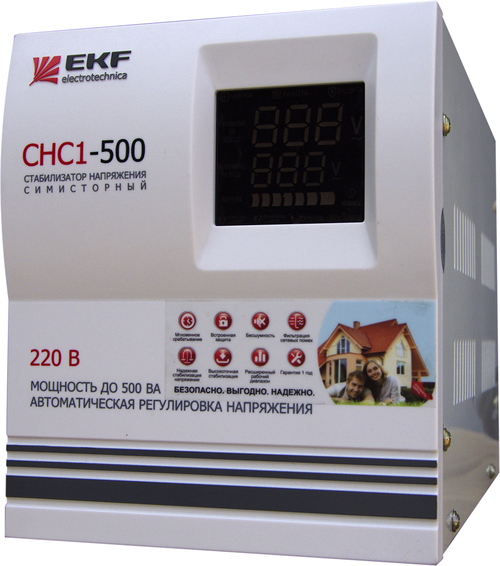
Photo: www.elvs.su
Common customer mistakes
- If your home voltage is good, then it makes no sense to buy a stabilizer for the whole house. It is enough to buy a small device, connecting to it only very sensitive devices.
- In order not to make a mistake when buying a voltage regulator, you need to know all the criteria for selecting a device. Approaching this issue responsibly, you will not regret the choice made.
- Consult an electrician or electrical technician. Installation of certain types of voltage stabilizers requires professional monitoring.

